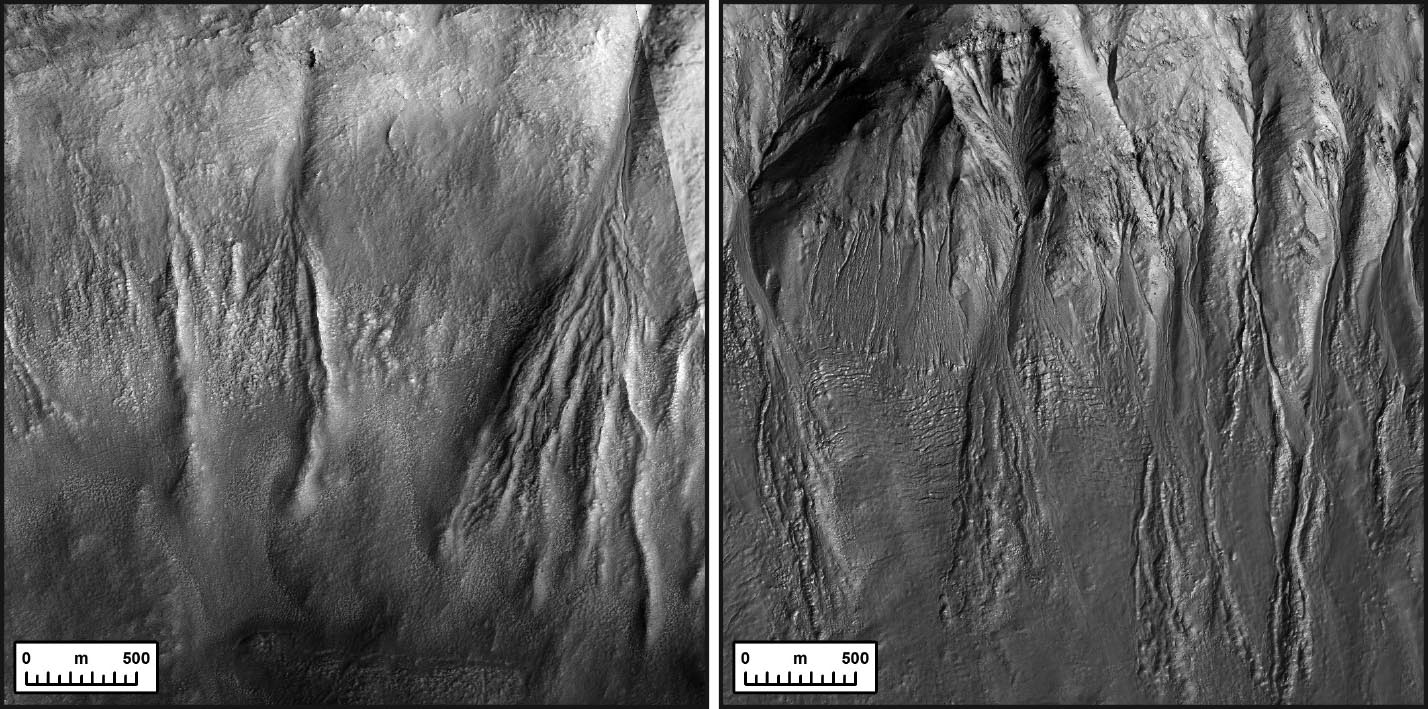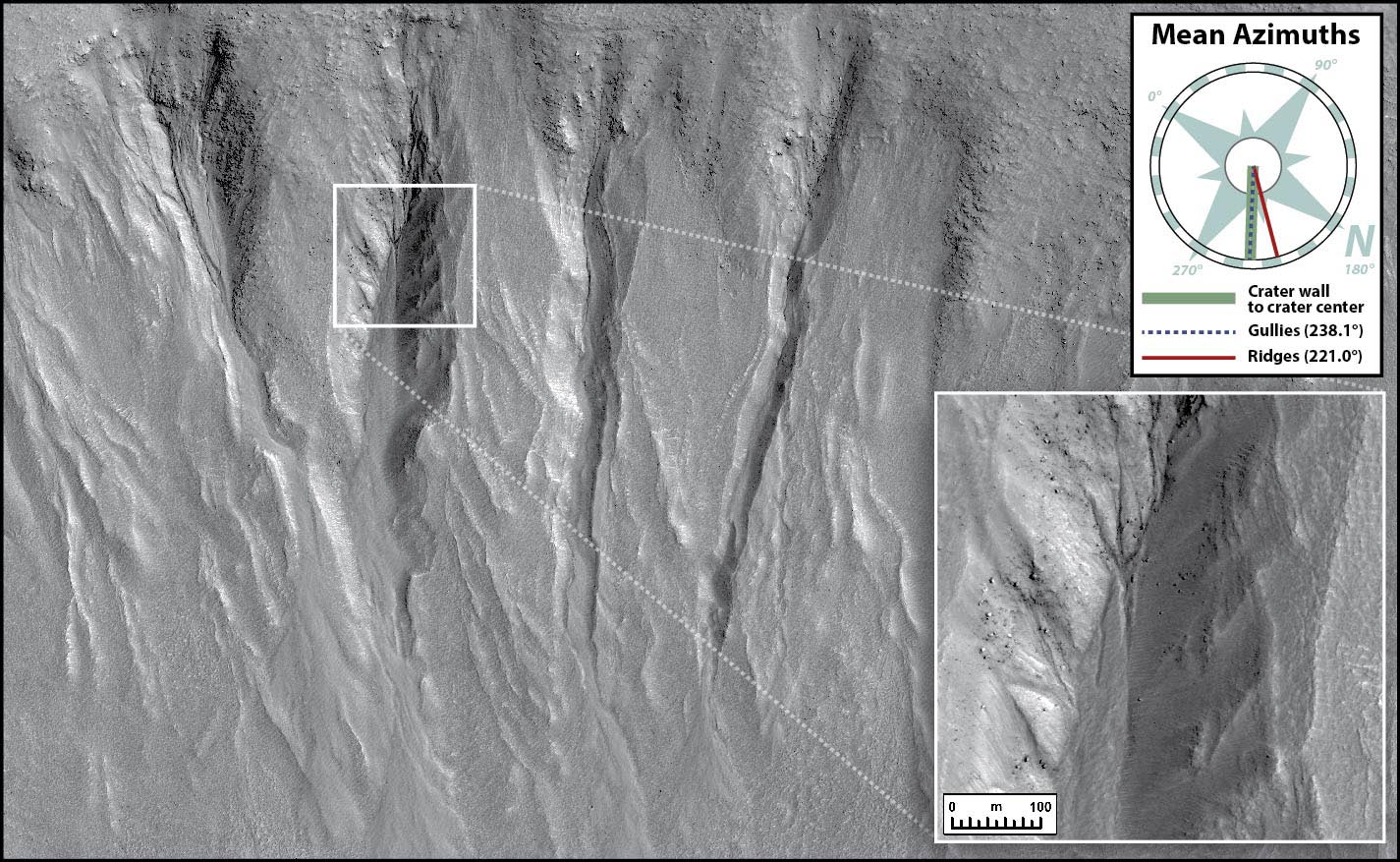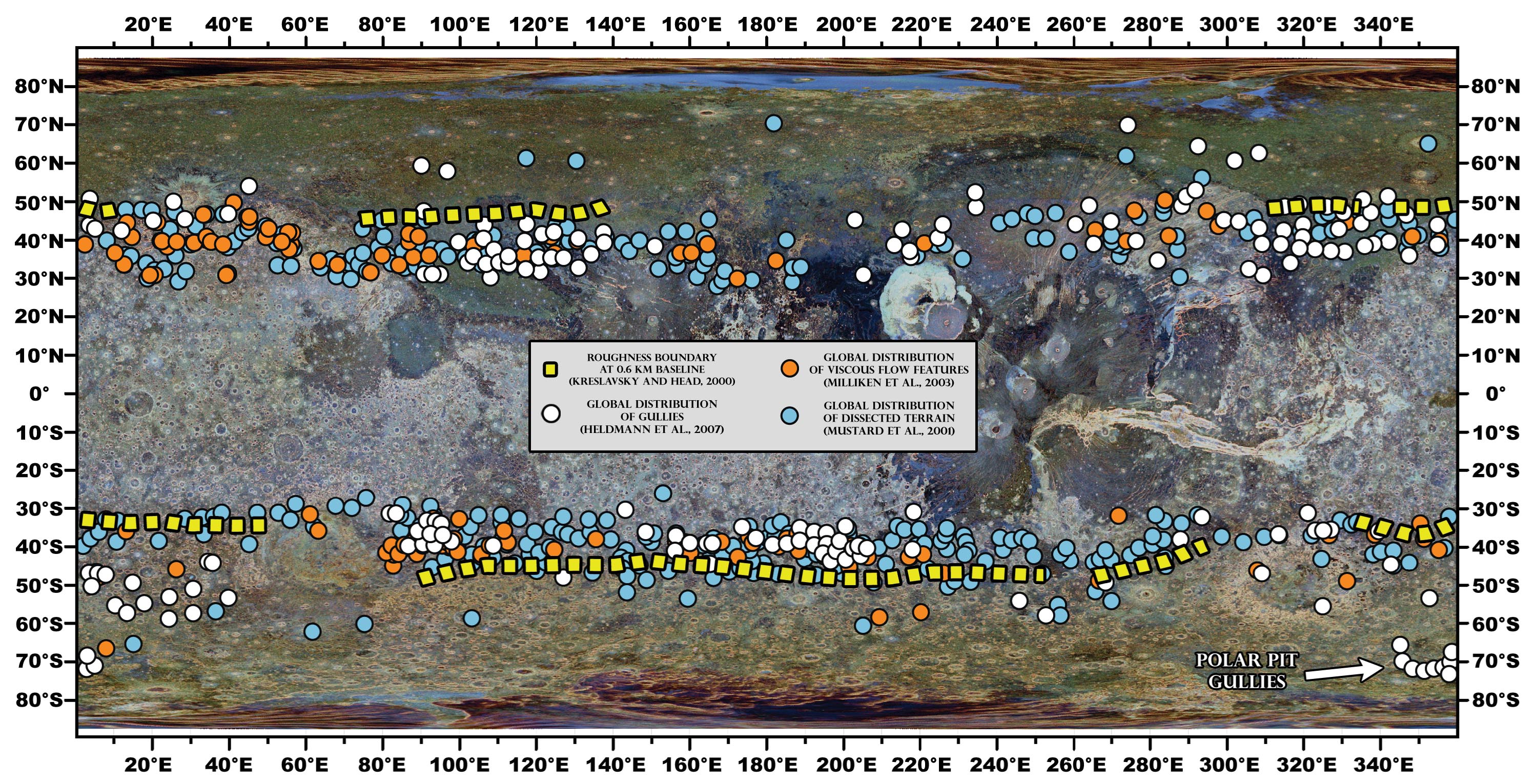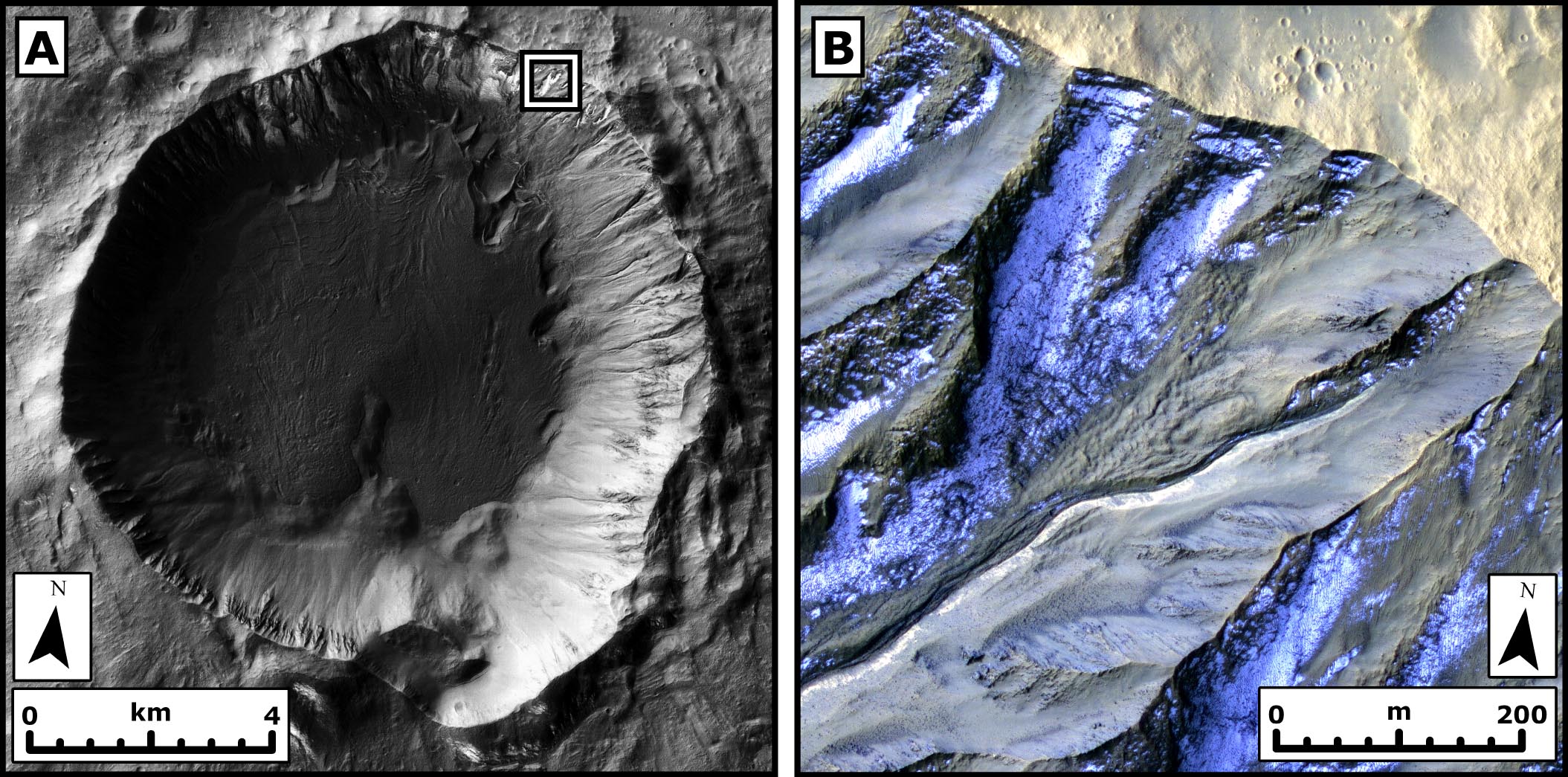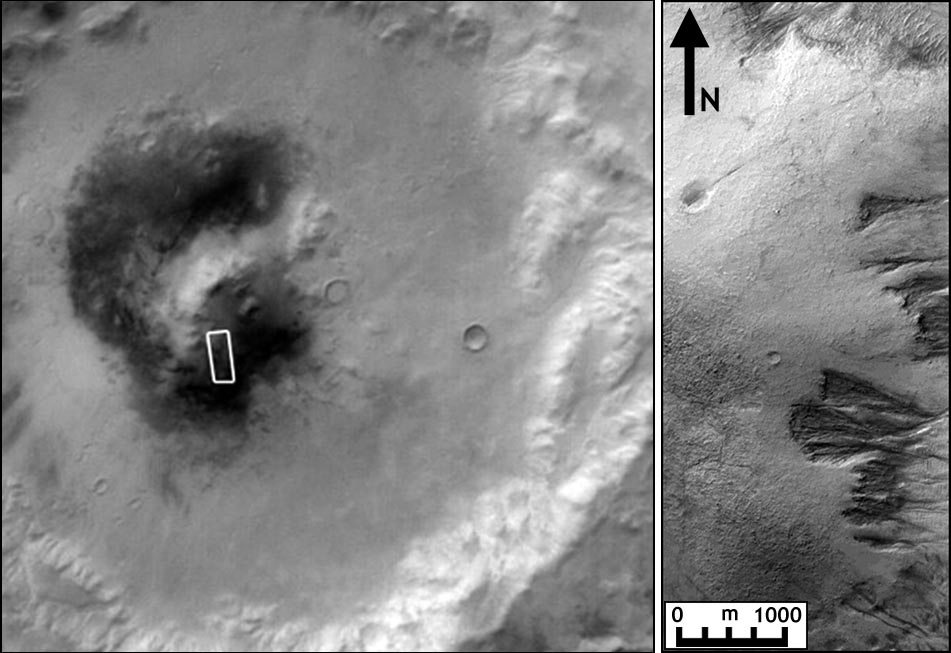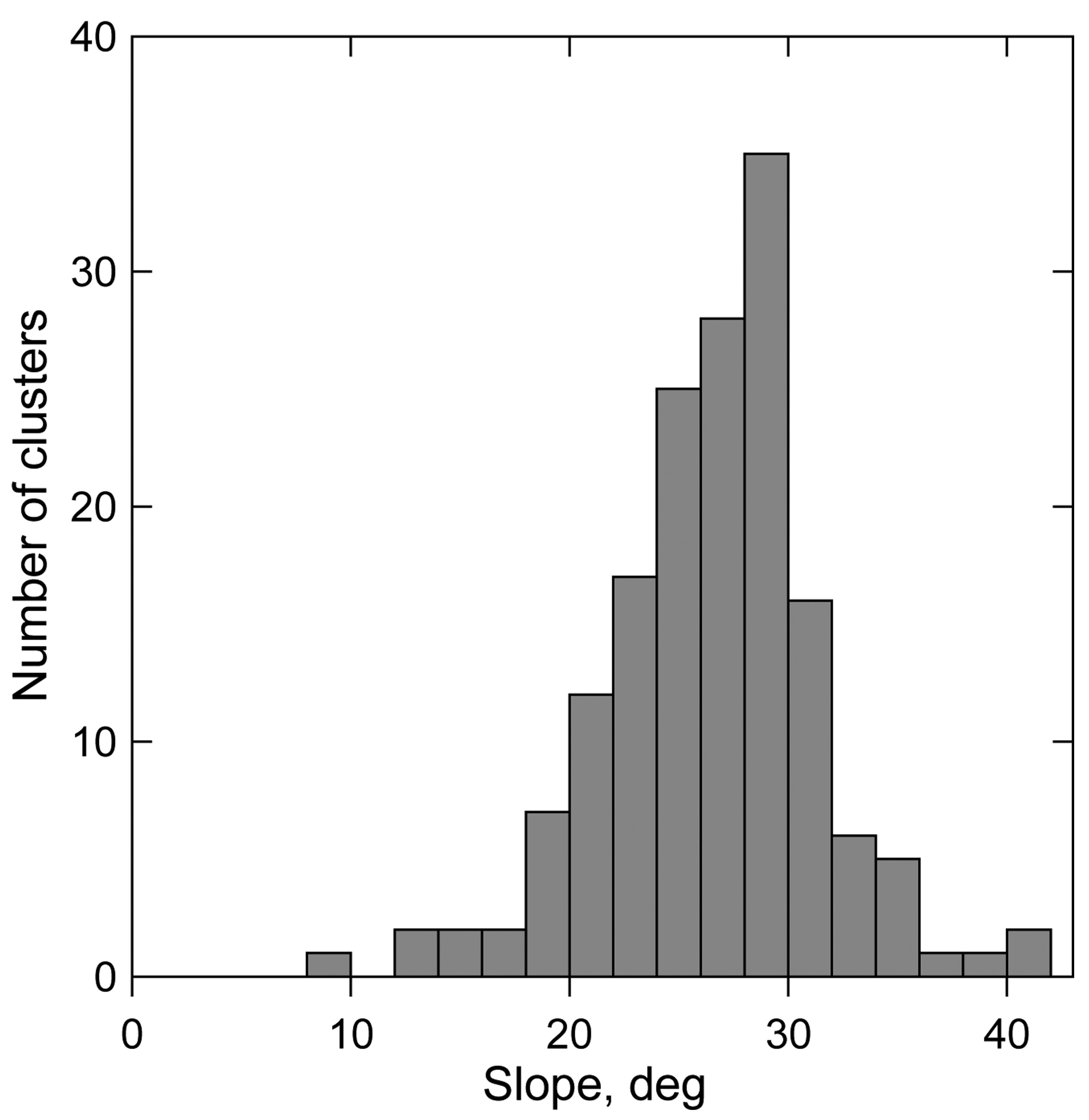Jay Dickson
jdickson@umn.edu
RESEARCH |
Gullies on Mars |
Gullies are extremely young channels on Mars that resemble small channels on Earth that are carved on steep slopes by liquid water. While they are related to the activity of volatiles on the surface of Mars, the relative roles of H2O and CO2 remain unclear. If water is involved in their formation and evolution, they provide a provocative feature for investigation of late-Amazonian fluvial activity at the surface. * * * The youth of gullies make them an important stratigraphic marker for evaluating ice-related features in the mid-latitudes of Mars. Gullies almost always incise the Latitude Dependent Mantle, which is known to be ice-rich and pervasive across the mid- and high-latitudes. Gullies provide a cross-section of the LDM, revealing multiple layers of LDM emplacement events and gully-forming events. This agrees with numerical simulations of Mars that predict cyclical emplacement and removal of the LDM. Gullies lower in this stratigraphy are preserved as inverted gullies, which are ridges that represent coarse channel-floor deposits. At the surface, the surrounding volatile-rich mantle has been removed to reveal ridges, common in both hemispheres. From Dickson et al., 2015. * * * While the latitude-dependent distribution of gullies pointed towards the involvement of a volatile in their formation, the challenges of preserving and melting ice at the surface today initially supported hypotheses that the volatile was derived from deep sources. As more data were acquired, more gullies were mapped in places that are challenging or impossible for deep groundwater to access. Concurrently, efforts to model the recent climate of Mars determined that ice at the surface has been more stable in the last few million years, when gullies have been forming. This combination of evidence suggests that gullies are more likely explained by near-surface volatiles instead of deep groundwater activity. From Dickson et al., 2009. * * * Gullies form on very steep slopes. Measurements made directly from Mars Orbiter Laser Altimeter (MOLA) track data revealed that gullies most commonly initiate on slopes of 25°-30°. This is ~5° steeper than had been previously measured and suggests that gullies are not dry but do not require as much fluid as had been previously thought. From Dickson et al., 2007.
|
